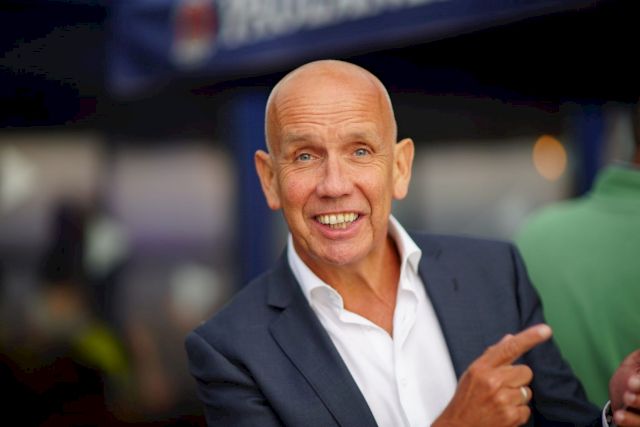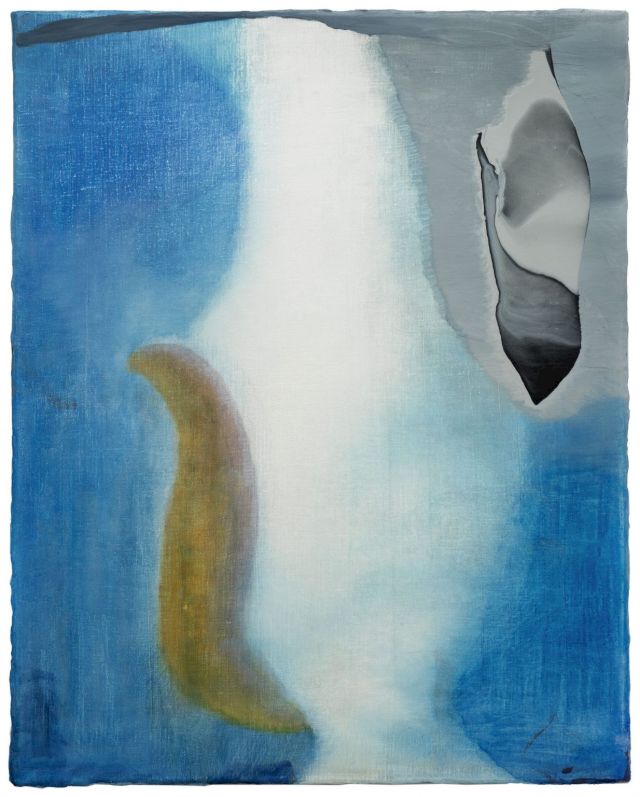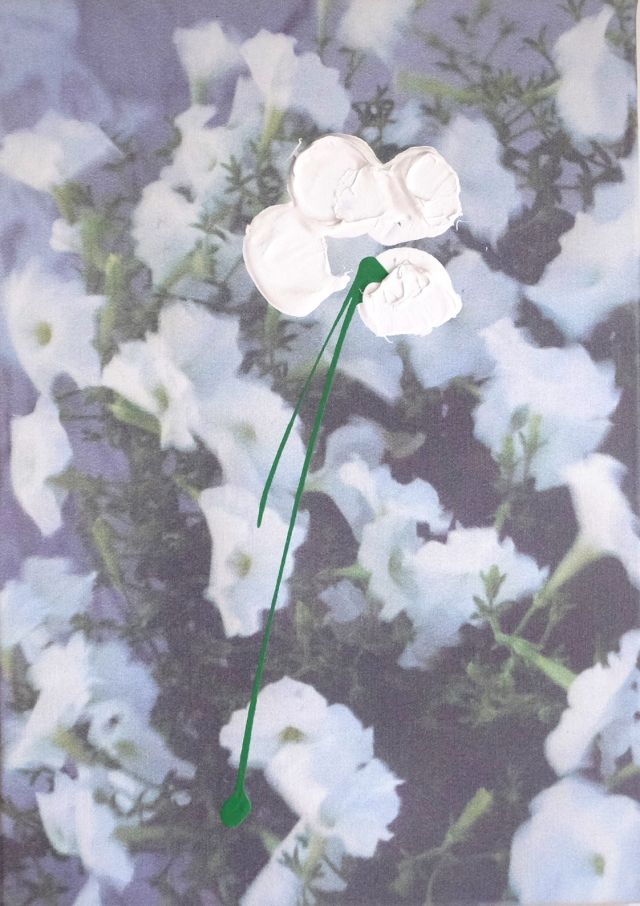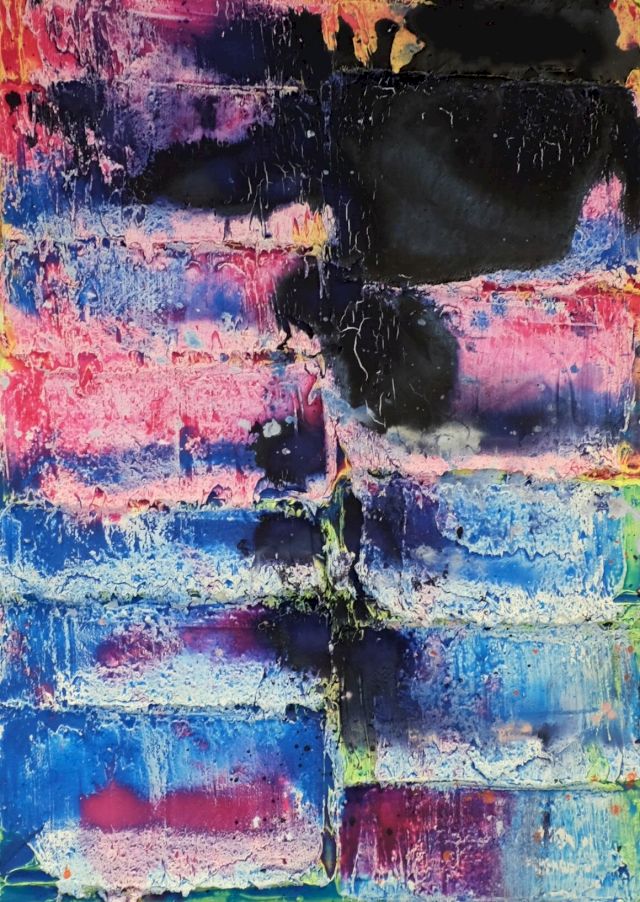Independent Collectors
Eric van ’t Hoff
Meet the Dutch art enthusiast who has dedicated his collection to supporting artists.

Dutch art enthusiast and collector Eric van ’t Hoff has dedicated the last three decades to supporting artists but just don’t get him started on copycats.
Located in the town of Nigtevecht in the Netherlands, Eric van ’t Hoff’s path to contemporary art wasn’t your average journey. After spending time in Turkey, Lebanon and Morocco as a child, it wasn’t until his parents moved to France that his passion for art was sparked. From then on, art for van ’t Hoff is a personal matter.
Now a seasoned collector and dedicated supporter of the local art scene in Amsterdam, van ’t Hoff spoke with IC about the importance of finding your own taste when it comes to art that you like, why it can be good to stick to a budget, and how a great uncle got him on the path to collecting.

IC
Let’s begin with how your interest in art began.
ERIC VAN 'T HOFF
When I was a child we lived in Istanbul, Beirut and Casablanca, with my parents and I coming back to Holland very infrequently so I was really surrounded continually by Ottoman art, Roman and Greek art. We went very often to visit historic museums and ancient places. We also visited Egypt, Syria, Jordan and Greece, and it was going on these trips that really influenced me a lot in the way that I was looking at art, but also the way that I was looking at architecture and also design. Greek and Roman architecture is always based on the laws of nature, so if you see a Greek temple the size of it is always in relation to that of a human body. The size of the temple is based on the sizing of the human body and as a result it means that you will never see something that doesn’t fit with your vision.
IC
So in a way would you say that it was architecture that initially sparked your interest in art?
ERIC VAN 'T HOFF
Not directly. I was really appreciative of the fact that I could see all of these temples, but it didn’t really spike my interest in art so to speak. It did however train my eye though to look for the beauty in things.
IC
That’s really interesting that it gave you more of an eye for appreciating beauty than it did encouraging an interest in art. But if that didn’t create your interest in art, what did? Do you remember the first moment you saw a painting of abstract art?
ERIC VAN 'T HOFF
This actually happened a bit later when I was a student and I used to visit my parents place once in a while when they were living in France. At that my parents had a book on the “De Stijl” group – the group made with Piet Mondrian, Theo van Doesburg and Bart van der Leck. The book was dedicated to the years around1910 and at that time Mondrian was creating completely abstracted works. When I saw this book I never really understood why someone took the time to write about just three colors, a vertical line and a horizontal line. I said to my father “what the hell is that book on the table!” because for me, it was totally useless and he told me “well Eric, I received it from your uncle and a family member of ours is mentioned in that book. This great uncle was called Robert van ‘t Hoff and he was an architect and one of the members of “De Stijl”, and in fact one of his villas, the Villa Henny is not too far from where we live now and is a completely abstracted building built in 1915. You really wonder how that could have been possible to build such a minimalistic building because at that time the houses for the more fortunate families were mostly built in a romantic style.
So after hearing that I decided to read more about this great uncle and about Mondrian and so on, and it was from that point on that I started to realize a lot about the making of art.
IC
Wow so it was really down to this one book that made you become interested in abstract painting?
ERIC VAN 'T HOFF
Yes I believe so. At that time there wasn’t the internet, we didn’t have the Independent Collectors platform, so you start reading, you go to shops and you buy more books etc. and after a while you start to realize a couple of things. Something that I also learnt from that book about Mondrian was that he wanted to make art that was appreciated and liked by everyone. He was really struggling with that, especially the works with trees, and it was only until he started working with the colors red, blue and yellow, and the two non-colors, black and white, that he ultimately ended up with something completely abstract and something that is still used today by designers and artists. A lot of people when they see a Mondrian painting is “oh my three year old daughter could do that”, but I realized then that everyone can make a painting but not everyone can come up with a concept behind a painting. To define the entire idea of a painting, creating an idea behind a painting is a thousand times harder than executing the idea.


IC
It’s quite clear to see that your family ties to abstraction has influenced your collection, and no doubt that book on your parents coffee table all of those years ago, but what else is important for your collection? Do you have any other themes running throughout?
ERIC VAN 'T HOFF
My collection began with abstract works, but not early avant-garde abstraction, as I never had the money to buy a Mondrian as it costs millions. But at that time, when I was younger, I believed that making figurative paintings is much easier than making an abstract painting, so at the beginning of our collecting journey we didn’t have any figurative paintings at home, and those that we have now are more abstract figurative paintings. I will never buy a portrait of someone and I also never buy artworks for an investment purpose but I do want to buy art that has a certain value in case I would end under a tram one day.
IC
And what is that you find so intriguing about abstraction?
ERIC VAN 'T HOFF
It’s the harmony of the colors; it’s the feeling that the paintings are giving back. They represent something but they are not political, they are not erotic they are not aggressive. Most of our paintings, from an aesthetic point of view, are pretty neutral – not totally neutral as they always have a story – but I will never buy something that has for example, a strong political content.
IC
With the works in your collection being quite neutral in terms of content, do you find that it makes it easier to live with them? Is it important for you to live with the artworks?
ERIC VAN 'T HOFF
For sure it’s important. Recently we went to a beautiful exhibition about painting as medium in the museum of Dordrecht that was showing a lot of artworks from painters that we have at home and, this happens every time, when you return home you will have a “mini museum” waiting for you. In a way you don’t need to feel so sorry that you have to leave the museum because when you get home you can experience the artworks again but without feeling the stress of closing time.


IC
Do you have any pieces that you cannot live with because of size or medium, or do you try to live with everything that you own?
ERIC VAN 'T HOFF
No but one factor that’s very important in our collection is that we stay within our budget of €5,000 – €10,000. When I started collecting I would buy artworks from young and emerging collectors directly from their studios, but now my eyes have seen so much, that I started to become elitist and look to champion league artists only. So within the realm of my budget it means that I can only buy small works by painters that are already quite famous, whereas a large painting from the same painter can cost €100,000 – €200,000. If you buy smaller works, up to size of A3 then you buy within my budget. I’d also like to mention that all of the works we have are unique as we do not collect multiples.
Funnily enough I always find a new place to hang a new painting, even though it is quite full already – we have some works upstairs that just can’t come downstairs due to lack of space. With this in mind, I also would like to emphasize that I am an art collector because I own an art collection, not because I’m collecting art. When I was a child I was collecting stamps and then you are really collecting because you want to complete a series. But when you collect art you don’t want to finish something – you want to get inspired and please your eyes
IC
Yes, it would seem that there is never a clear ending with an art collection.
ERIC VAN 'T HOFF
Yes, exactly. It can be quite frustrating! You never know what your next piece will be. I have I always have a “top five” in my mind but I can tell you that I very often buy something that is not on my top five because when I see an artwork in a gallery and then I learn a little bit more about the artist C.V., I get hooked.
IC
How do you go about finding the artists in your collection? Obviously reading books and going to exhibitions is important for you, but is there another medium that you enjoy using?
ERIC VAN 'T HOFF
When I started seriously collecting in the 1990s I had to go to the libraries and bookshops, as well having subscriptions to many art magazines, to help me research art. Today that level of research doesn’t cost more than a few mouse clicks.

IC
Is that just because you have a deeper understanding of the type of artist that you’re interested in as you learn more?
ERIC VAN 'T HOFF
Yes. Over time you have your favorite galleries, you go to the openings and meet with the artists. I think at the beginning you can be extremely insecure but that all goes away once you start training the eye.
IC
I read an interview with you that said that you love the hunt of finding an artwork and that it is this particular aspect of collecting that you like. Where does this passion come from and why do you find it so important to your collection?
ERIC VAN 'T HOFF
What I find extremely important in art is that the artists must be the first one that has created that type of image, or use that type of material. I am always hunting art that is extremely innovative. In the past I was buying artwork from post-war but today I am mainly buying contemporary art, even though the last piece I bought was already twenty years old I wanted to make sure that it was something that was unique for that time. I don’t want something that’s copied from another artist. I’m always searching for something unique. People are always saying to me that everything has already been done already and nothing is unique anymore, but that is completely untrue. And that is where I am focusing my collection.
IC
But to be a good hunter you need to have focus and discipline, correct?
ERIC VAN 'T HOFF
Yes because there are simply too many artists. If you go to an exhibition or an art fair there are just so many galleries to visit that you just simply don’t have the time. Realistically you only can focus on the galleries that you are already familiar with.
I don’t want something that’s copied from another artist. I’m always searching for something unique.
ERIC VAN 'T HOFF


IC
It sounds like the Netherlands encourages young collectors to get the “bug” of collecting quite early on. Is much of your own personal time spent seeing and experiencing art? Does it ever get too much?
ERIC VAN 'T HOFF
Yes but I never see it as time badly spent. We have friends that sometimes say to us that we always find nice things to do on the weekends and I always say that we just go to museums and galleries. You can just do it and that way you are never bored. If we don’t know what to do we just take a look at what shows are happening and then we go. If you like art, you’ll always find something to do. It’s a way to continuously educate yourself.
IC
Where would you like to see your collection ahead? We spoke about a collection never having an end point, but do you have a preferred direction that it might take?
ERIC VAN 'T HOFF
Good question! I believe that collecting art or being interested in art can never stop. I have met many art collectors and they continue to buy and buy and it only becomes worse and worse. Also the older you get, the more you feel guilty for only buying and not giving back, so I am also sponsoring two foundations here in Holland: the Titus Circle and the Stedelijk Circle, next of being an ambassador of the Young Collectors Circle. We also loan artworks to museums about once every one to two years, which compared to other collectors isn’t a huge amount but we think it’s important to do so. But no, I don’t think it will ever end.